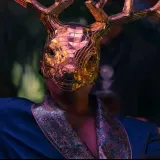Case File #016: The Dyatlov Pass Incident – Death in the Snow
Status: Unresolved – Official Theory Disputed
Date Filed: February 1959
Last Reviewed: May 31, 2025
Location: Kholat Syakhl, Ural Mountains, Russia
Subjects: Igor Dyatlov & Team (9 Victims)
Filed Under: Cold Case – Unexplained Deaths – Environmental Anomaly
Access Level: Partial – Russian State Records Redacted
Introduction: Nine Went In, None Came Back Alive
In the winter of 1959, nine Soviet hikers led by 23-year-old engineering student Igor Dyatlov embarked on a skiing expedition in the northern Ural Mountains. All were experienced outdoorspeople, trained in survival and alpine navigation. They never returned.
Weeks later, rescuers found their camp in chaos. Their tent was slashed open from the inside. The hikers had fled into sub-zero temperatures—barefoot, half-naked, without gear. Their bodies were found scattered over kilometers of deep snow.
Some died from hypothermia.
Others from crushing internal trauma.
One was missing her tongue.
Several had traces of radioactive contamination on their clothing.
Over six decades later, no theory has fully explained what happened.
The Expedition: Setting the Scene
- January 25, 1959: The team arrives in Ivdel, then travels by truck and sled to their last known waypoint.
- January 31: They leave extra supplies at a base camp and begin ascending Kholat Syakhl—meaning “Mountain of the Dead” in the local Mansi language.
- February 1: The hikers pitch a tent on a slope—exposed, unusual, but explainable as poor visibility caused them to lose their route.
- February 2: Something goes horribly wrong.
They never make contact again.
The Discovery
When they failed to check in, a rescue team was dispatched.
- February 26: Rescuers locate the tent. It’s half-collapsed, and slashed from the inside. All belongings—boots, coats, stoves—were left behind.
- Footprints, mostly barefoot or in socks, lead into the woods.
The bodies were discovered over time:
- Two men found under a cedar tree, barefoot, dressed only in underwear. Burn marks on skin.
- Three more found between the tree and the tent, appearing to have collapsed while trying to return.
- Two months later, the last four bodies were found in a ravine beneath snow.
It was the condition of these final four that changed everything.
The Autopsy Findings
- Ludmila Dubinina: Tongue, eyes, and part of lips missing. Severe internal bleeding in chest cavity. Ribs crushed.
- Semyon Zolotaryov: Multiple broken ribs. Crushed skull.
- Nikolai Thibeaux-Brignolle: Fatal skull fracture.
- Alexander Kolevatov: Neck twisted, multiple soft-tissue damage.
No external wounds. No struggle marks.
Just devastating internal trauma.
The forensic pathologist noted:
“The force required to cause such injuries would be comparable to a car crash.”
Radiation was found on some clothing, especially Zolotaryov’s.
The Official Investigation
The Soviet investigation was closed quickly, stating that the group died due to a “compelling natural force.”
The files were sealed.
Witnesses were told not to talk.
Military presence was noted in nearby regions.
The case faded into silence... until the internet and independent researchers dug it back up.
Theories: What Could Have Done This?
1. Avalanche
- The most accepted theory post-2019.
- A sudden snow shift scared the hikers into fleeing.
- Internal trauma from snow impact.
But: - No avalanche debris was found.
- Tent remained partially standing.
- Why did they flee barefoot… and not return?
2. Infrasound Panic
- High winds over the mountain caused low-frequency sound waves (infrasound) that triggered extreme anxiety, hallucinations, and panic.
- Explains irrational behavior—like slashing the tent and fleeing.
Doesn’t explain: - The blunt force trauma.
- The radioactive contamination.
3. Soviet Military Accident
- Nearby testing of parachute mines, missiles, or chemical weapons.
- The hikers were in the wrong place at the wrong time.
- Government covered it up.
Supports: - Rushed investigation.
- Rads on clothing.
- Soft-tissue injuries with no external wounds—like a blast wave.
4. Mansi People Attack
- Indigenous locals feared the hikers were trespassing.
But: - Mansi were peaceful.
- No signs of violence, struggle, or weapons.
- Theory widely rejected.
5. Paranormal or Extraterrestrial Encounter
- Orbs of light were seen in the sky by other expeditions nearby.
- Some believe the trauma came from a non-human force: aliens, interdimensional beings, or energy phenomena.
- Zolotaryov was found with a camera around his neck, destroyed film inside.
Is it fantasy? Or are we just afraid to admit the truth might be… off this world?
Legacy of Silence
The Dyatlov Pass Incident became legendary across Russia and beyond:
- Films (The Devil’s Pass)
- Books, documentaries, Reddit megathreads
- Dedicated researchers (like Yuri Yudin, the 10th hiker who turned back early and lived) spent their lives chasing answers.
In 2020, the Russian government re-opened the case… only to re-confirm the avalanche theory.
Most don’t believe it.
Conclusion: A Snowstorm of Secrets
Something happened on that mountain.
Something that scared trained hikers into fleeing barefoot into -30°C weather, slashing their tent, abandoning supplies—and dying in ways science still cannot fully explain.
Nine people went into the night.
None came back.
And what’s left behind is a tangle of footprints, fractures, and fear.
The Ural Mountains keep their dead.
And their secrets.
References
All sources used in this case are listed in the References Archive. Each link corresponds to verified data, public records, or expert documentation.

